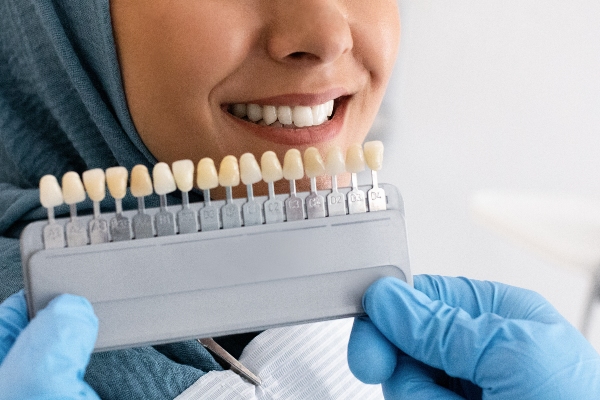 A visit to the family dentist is recommended every six months. For patients with proper oral hygiene, the treatment provided during these visits should be primarily preventative. However, even those who take good care of their teeth occasionally need restorative treatments due to accidents or natural wear and tear over time.
A visit to the family dentist is recommended every six months. For patients with proper oral hygiene, the treatment provided during these visits should be primarily preventative. However, even those who take good care of their teeth occasionally need restorative treatments due to accidents or natural wear and tear over time.
Primary reasons for restorative treatments
Most patients in need of dental restoration need help in at least one of the following categories.
Fixing damaged teeth
Teeth that have been damaged in an accident or from decay may need to be repaired with bonding treatment or dental fillings. A cracked or chipped tooth is more susceptible to decay because bacteria can penetrate the enamel. Dental bonding can often repair a crack or chip without being overly invasive or removing much of the existing enamel.
Decayed teeth are commonly fixed with fillings. When decay is allowed to remain in or on a tooth, it will continue to erode the enamel and cause further harm to the tooth. A family dentist may fix many types of decay by removing the dead tissue, cleaning and sanitizing the infected area, and filling or bonding it to prevent the decay from coming back.
Restoring missing parts of teeth
There are patients whose teeth have so much decay and erosion that entire portions are missing. Each case is unique and can require anything from inlays and onlays to crowns in order to make the tooth healthy again. While some eroded teeth can be restored with one or more fillings, others have gone beyond the point of filling and must be fixed with a crown. Dentists will most often try to save as much of the natural tooth as possible, but sometimes it is better for the tooth to be filed down and crowned than to risk the tooth decaying further and causing infection and pain in the nerve.
Replacing entire teeth
When the natural tooth is unable to be salvaged, dental professionals can replace it with a bridge, an implant, or dentures. If just a single tooth needs replaced, an implant can act as an artificial tooth root inserted into the jawbone. A bridge can be a good choice for those missing two or three teeth, as long as the natural teeth on either side of the gap are strong enough to support the anchors of the bridge. For those missing several teeth scattered throughout the mouth, dentures may be the way to go. It is important to consult with a dental professional before making a decision about which option will produce the desired results with the least amount of risk.
Conclusion
Teeth that are allowed to remain damaged or missing can end up doing severe damage to the remaining teeth or jawbone. Any time some form of decay, damage, or erosion is present, a family dentist will typically recommend a form of restorative treatment to make the mouth healthy and whole again.
Request an appointment or call Sonoran Desert Dentistry at 480-439-0117 for an appointment in our Scottsdale office.
Recent Posts
A family dentist might recommend fluoride treatments for patients with decayed or sensitive teeth. These treatments can reverse the demineralization stage of gum disease and strengthen enamel, protecting teeth from decay for up to six months. Fluoride treatments are often performed after teeth cleanings to protect patients until their next routine appointment.Fluoride is a natural…
If you follow recommendations from the American Dental Association, you should visit your family dentist twice a year. These visits provide more than just a cleaning and dental exam; they give you the opportunity to talk with your dentist about proper oral healthcare. While it could be intimidating or embarrassing to open up to your…
Taking young children to the family dentist can be overwhelming at times, especially because they are more prone to dental fear and anxiety. However, dental care is essential for children, just as it is for adults, and should start at a very young age. The American Dental Association recommends that children visit the dentist as…


